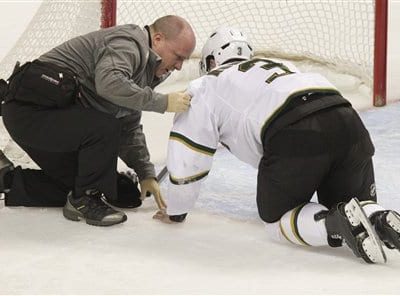Engaging in sports is a great way to stay active, build strength, and enjoy recreational activities. However, with the excitement and intensity of physical exertion comes the risk of injury. From sprains and strains to more serious conditions like fractures and concussions, understanding common sports injuries and their prevention is crucial for athletes and recreational players alike. This guide explores frequent injuries in sports and offers practical tips on how to avoid them, ensuring a safer and more enjoyable experience.
Sprains and Strains
Sprains and strains are among the most common sports injuries. A sprain involves the overstretching or tearing of ligaments, while a strain affects muscles or tendons. These injuries often occur in sports that involve sudden movements or changes in direction, such as basketball or soccer. Sprains typically affect the ankles or knees, while strains are common in the hamstrings or lower back.
Preventing sprains and strains involves proper warm-up and stretching exercises before engaging in sports activities. Incorporating flexibility and strength training into your routine can also help prepare your muscles and ligaments for the demands of the sport. Wearing appropriate footwear and using protective gear, such as braces or supports, can further reduce the risk. Additionally, learning and practicing correct techniques for movement and jumping can help minimize strain on your body.

Fractures
Fractures are breaks in the bone that can occur due to impact, overuse, or falls. In sports, fractures are common in high-contact activities like football, hockey, or skiing. Stress fractures, which are tiny cracks in the bone caused by repetitive stress, can also affect runners and athletes involved in sports with a lot of jumping or running.
To prevent fractures, it’s essential to use proper equipment and follow safety protocols specific to your sport. For instance, wearing protective pads, helmets, or guards can help absorb impact and reduce the risk of bone injuries. Ensuring that your body is in good condition with adequate strength and bone density, which can be supported by a balanced diet rich in calcium and vitamin D, is also crucial. Additionally, paying attention to technique and avoiding overtraining can help prevent stress fractures.
Concussions are a type of traumatic brain injury caused by a blow to the head or a violent shaking of the head. They are particularly prevalent in contact sports like football, rugby, and hockey. Symptoms of a concussion can include headache, dizziness, confusion, and loss of consciousness.
Preventing concussions involves using proper protective gear, such as helmets designed to absorb and disperse impact forces. It’s also important to adhere to rules and regulations that promote player safety, such as avoiding dangerous tackles or hits. Education on recognizing the signs of a concussion and understanding the importance of reporting symptoms and seeking medical attention can help manage and prevent further complications. Ensuring proper technique in sports activities can also reduce the risk of head injuries.
Tendinitis
Tendinitis is the inflammation of a tendon, often caused by repetitive movements or overuse. Common in sports that require repetitive motions, such as tennis, golf, or running, tendinitis typically affects the shoulders, elbows, knees, or Achilles tendon.
To prevent tendinitis, incorporating proper warm-up and stretching routines before exercise is essential. It’s also important to use correct techniques and avoid overuse by gradually increasing the intensity and duration of your activities. Taking regular breaks during repetitive activities and allowing adequate recovery time for your tendons can help reduce the risk of tendinitis. Strengthening exercises and using proper equipment or gear tailored to your sport can further protect against tendon injuries.
Sports injuries, while common, can often be prevented with proper precautions and techniques. By understanding the risks associated with sprains, strains, fractures, concussions, and tendinitis, athletes and recreational players can take proactive steps to safeguard their health. Emphasizing proper warm-ups, strength training, correct technique, and appropriate protective gear can make a significant difference in reducing the likelihood of injury. Remember that taking care of your body and listening to its signals are key components of a successful and injury-free sports experience. Whether you’re a seasoned athlete or just starting out, prioritizing injury prevention will help you enjoy your favorite sports safely and effectively.





